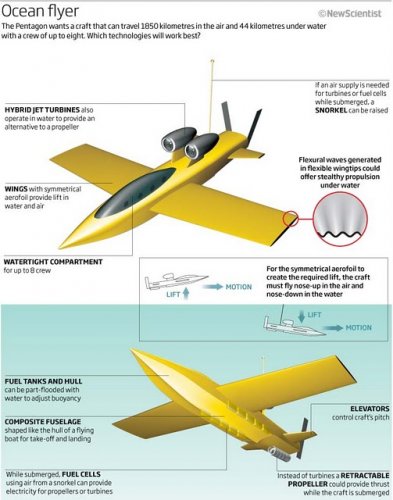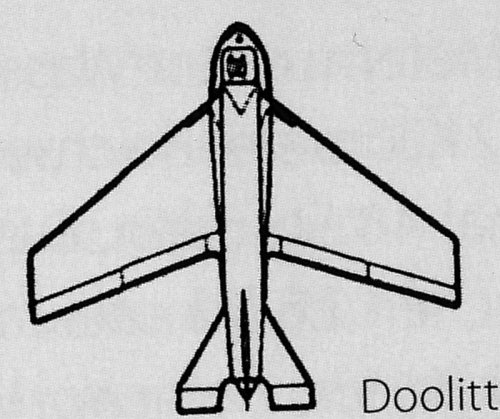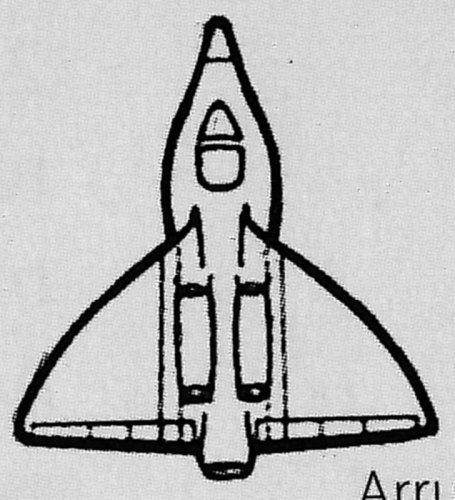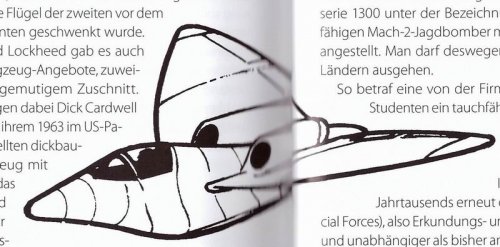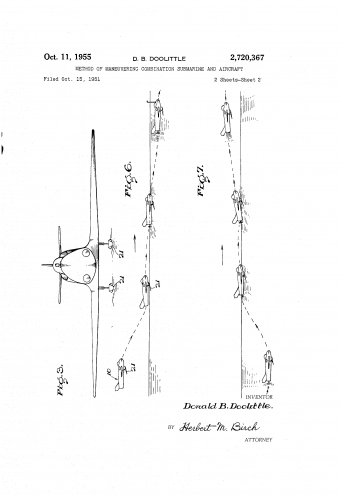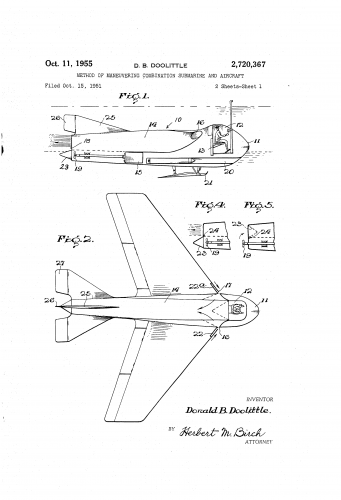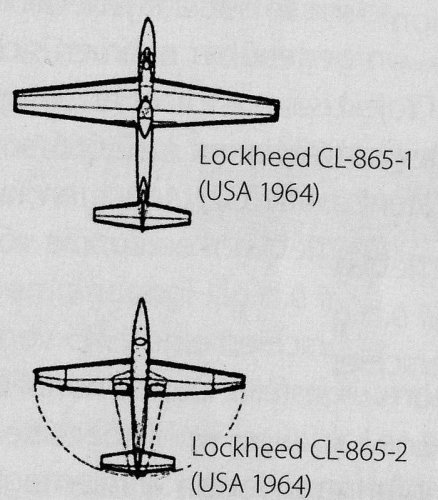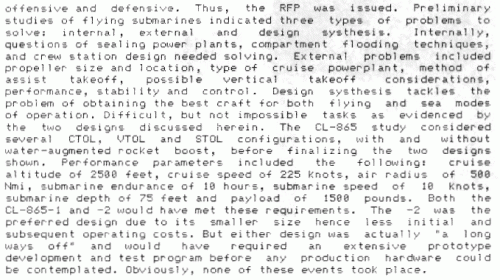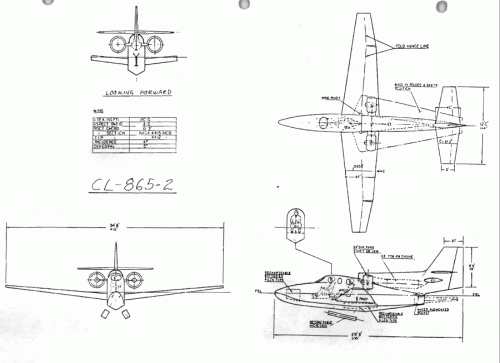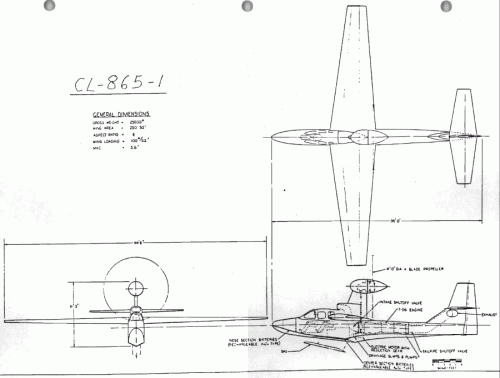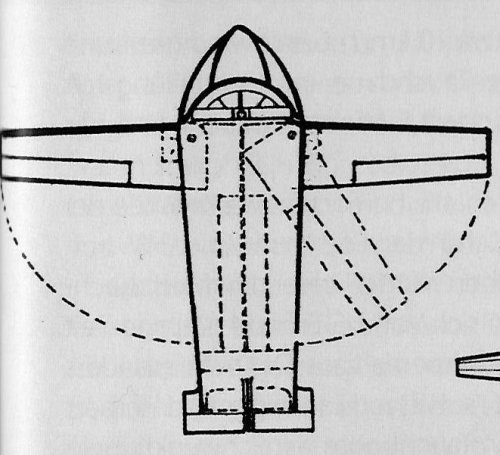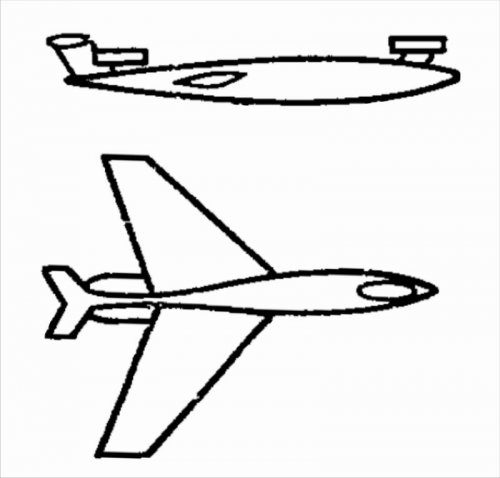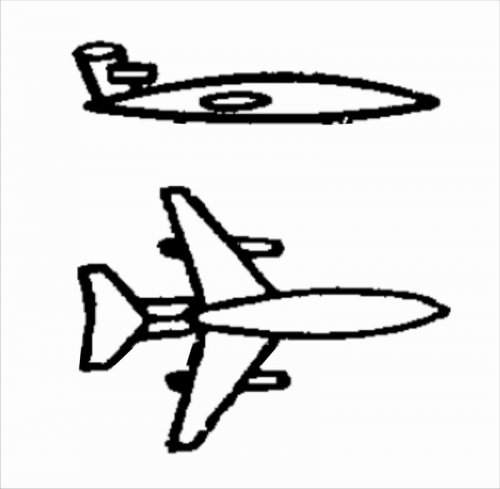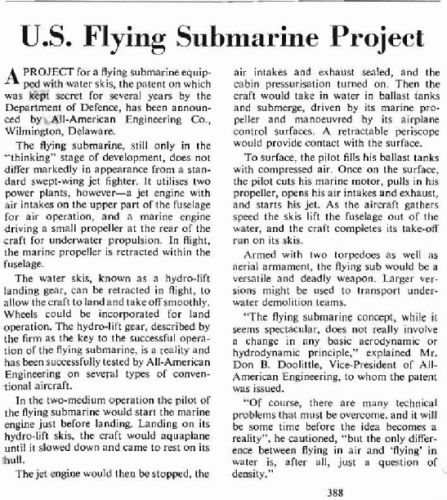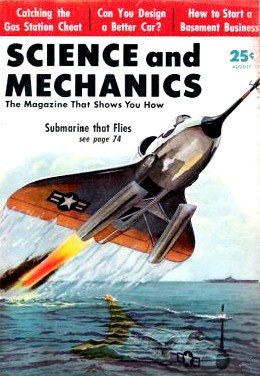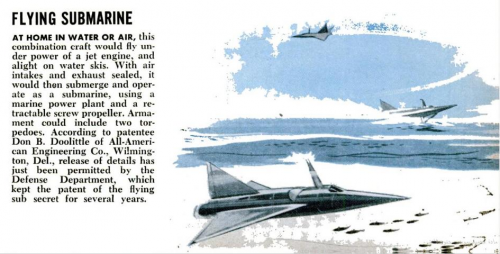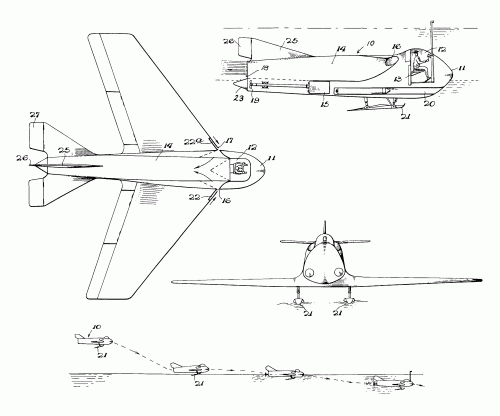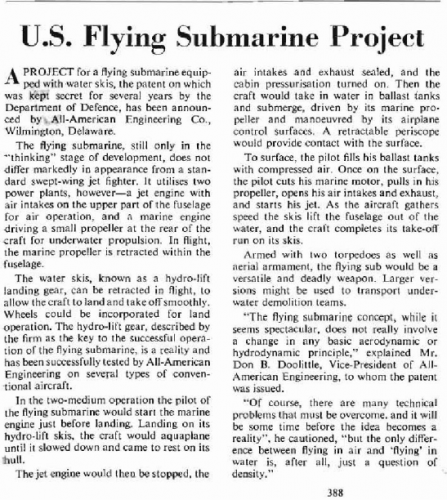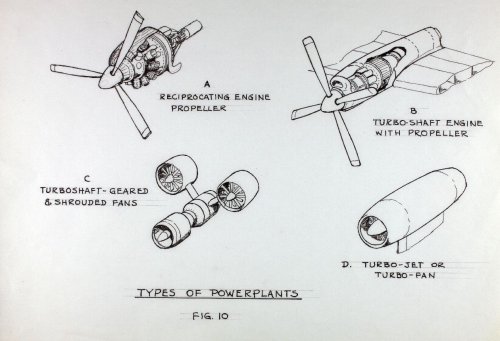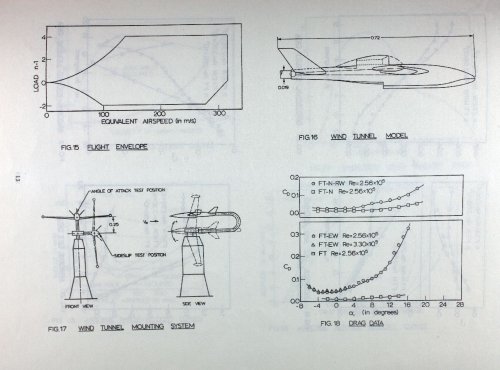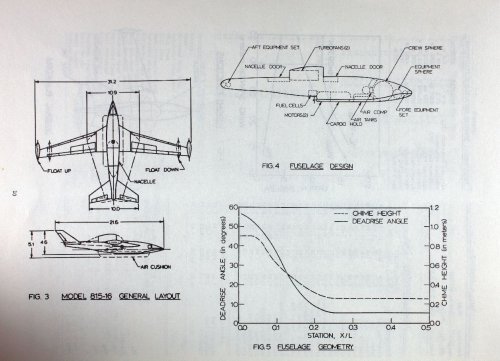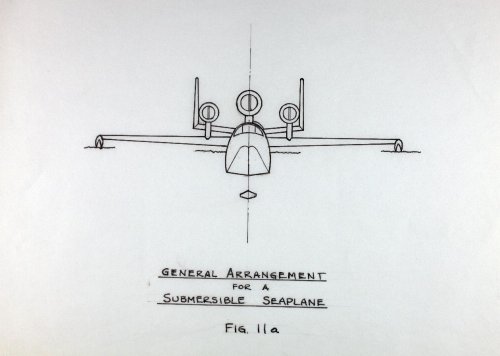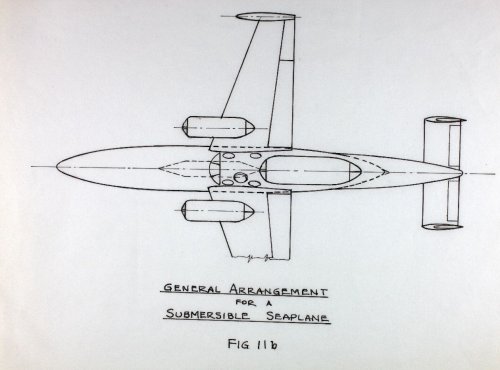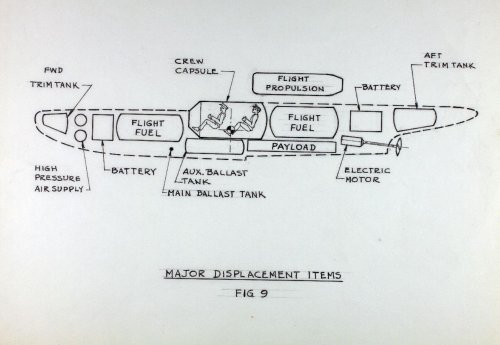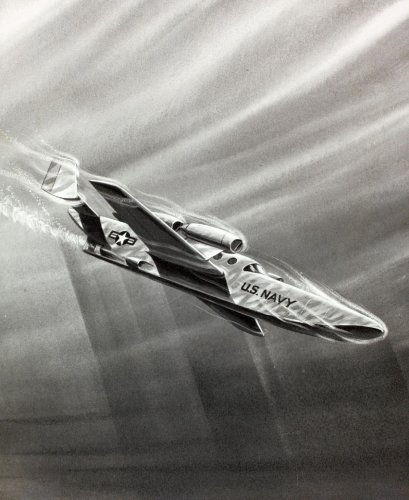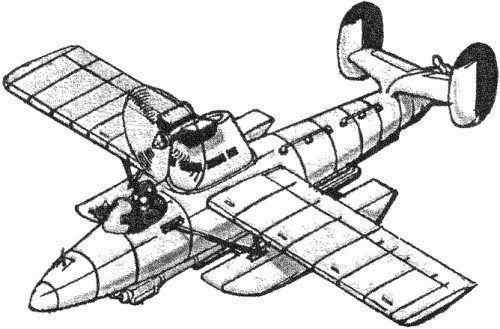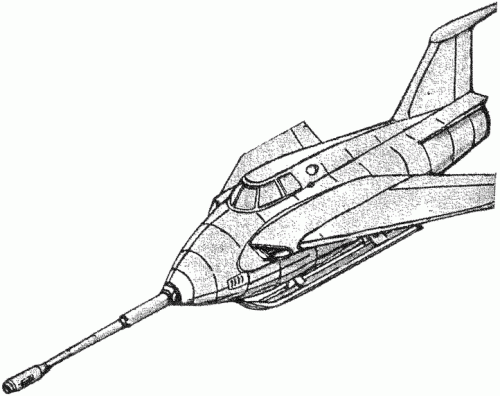AeroFranz said:
Marc, I welcome your book project and can't wait to see it come to fruition.
I can tell you that in our case, as you have correctly noted, we realized that a pressure hull was a non-starter. We ended up settling on a floodable fuselage, passengers having to use breathing apparatus for the 12 miles of underwater trip. Nearly everything on an airplane is buoyant underwater, minus the powerplant perhaps, so that was our only choice.
We also had to fold the wings, IIRC.
There was some talk of using primary (non-rechargeable) batteries using saline water as one of the reactants, in order to get higher specific energies and carry less weight.
I assumed that at least part of the machine would have to stay dry, if only so the crew could take their meals during the loiter period, so I made the flight/navigation crew compartment operate as a "dry ambient" space, while the commandos' compartment was flooded during submergence as per your plan. The dry ambient compartment structure would always be under positive gauge pressure, so methods used in designing pressurized compartments for high-altitude aircraft would work. The commando compartment would also have to be pressurized in flight - it isn't reasonable to expect them to be on oxygen for the entire transit into the operational area, and forcing transit at low altitude is operationally limiting and uneconomical. So basically you end up with two personnel spaces: one always under positive gauge pressure and one under positive gauge pressure in flight and zero gauge pressure on the surface and submerged, but wet when submerged. Interesting materials selection problem, but not structurally challenging. The operational challenge is of course the problem of saturation and avoiding caisson disease; that criterion - depth and duration - is what will determine the diving limits in this kind of machine. I'm hoping that the machine will end up small enough to make an approach at shallow depth realistic.
For the overall configuration I postulate a slender body - how slender depends on aerodynamic performance required, but there are applicable studies of slender bodies for short-haul airliners dating to the 1960's. The idea is to have continuously-curved surfaces throughout to minimize "conventional" radar cross-section. No excrescences in any mode but snorkeling - all antennas housed inboard except the antenna array on the snorkel mast. From a frontal aspect, even on imaging sonar, the body will look very much like a natural formation - a rock outcrop or whatever - with the snorkel retracted. I would make no concession to surface seakeeping; the "surface" loiter configuration for this beast would be a drift dive at snorkel depth. Takeoff would be accomplished using one or more retractable hydro-skis, and bleed-air from the compressor of one of the gas generators could be used to help "unstick" the rather large wetted bottom area to help get the machine ski-borne.
Given the military's (and my) preference for heavy fuel and the weight penalty of a diesel powerplant, I postulate a gas-turbine-based powerplant consisting of one or more gas generators (probably more) and at least two free power turbines, one of them driving a high-bypass turbofan for flight and another the surface/snorkeling drive system, which with my predilection for shrouded propulsors I would prefer to be a waterjet. A third free power turbine might drive an APU, or perhaps the turbine for the marine drive could do double duty. Liquid fuel is still vastly superior to battery and ultracapacitor storage in terms of both mass and volume, so I am assuming that submerged loiter and most of the final approach to the target are accomplished using the snorkel. There is an operational advantage here in that the snorkel mast will also have an antenna array that will allow the flight/nav crew to monitor their environment for imminent threats and to receive one-way radio and possibly optical communication from their base, and of course navigation signals to update the inertial navigation system used when submerged. Naturally there will be video cameras at mast-top as well, so the operators and the crew can "scope out" their insertion point. Final approach to the insertion point would be under electrical power, still using the waterjet but driving it with an electric motor coaxial with the free power turbine. Here is where bleeding edge technology could give high returns - every ounce of battery weight and every cubic inch of dry storage saved would save pounds overall. There is work currently being done on integrating energy storage into the skin of a composite stressed-skin craft, and this might be a flagship application.
Buoyancy control is murder, as you've noted, so I've stolen one idea from the Navy study. They have the fuel stored in flexible bladders in a space that is flooded when submerged. The pressure of the incoming water displaces fuel into the (now sealed) gas generators and power turbine(s), flooding them with fuel and expelling the air contained inside. Those spaces are now at ambient pressure (kept there automatically), but are filled with fuel which is a good deal less buoyant than air. My plural gas generator, plural turbine arrangement implies a lot of bulky ducting, and I fear that the ducting, and possibly the propulsive fan, will have to be flooded when submerged. This implies a fairly elaborate procedure for reconfiguring the craft for takeoff after recovery of the commandos, and it will need to be automated to the maximum extent possible. I'm pretty sure that it will not be permissible to have any free-flooding volume - it will have to be possible to positively expel water from every space that it occupies during submergence. Fortunately, with even one gas generator operating there will be a lot of bleed-air available for blowing out ballast, and air-driven ejectors can be used to scavenge the last bit of water from tight spaces. Obviously, this scheme calls for at least one gas generator and one turbine to be in sealed, one-atmosphere-pressure environments at all times - it may be necessary to have one gas generator integral with and dedicated to the APU/marine turbine to keep volume and weight down. That's going to take some effort to make it work, but I think the only near-term solution is to rely primarily on liquid fuels as the energy source and on combustion engines to convert them to useful work.




